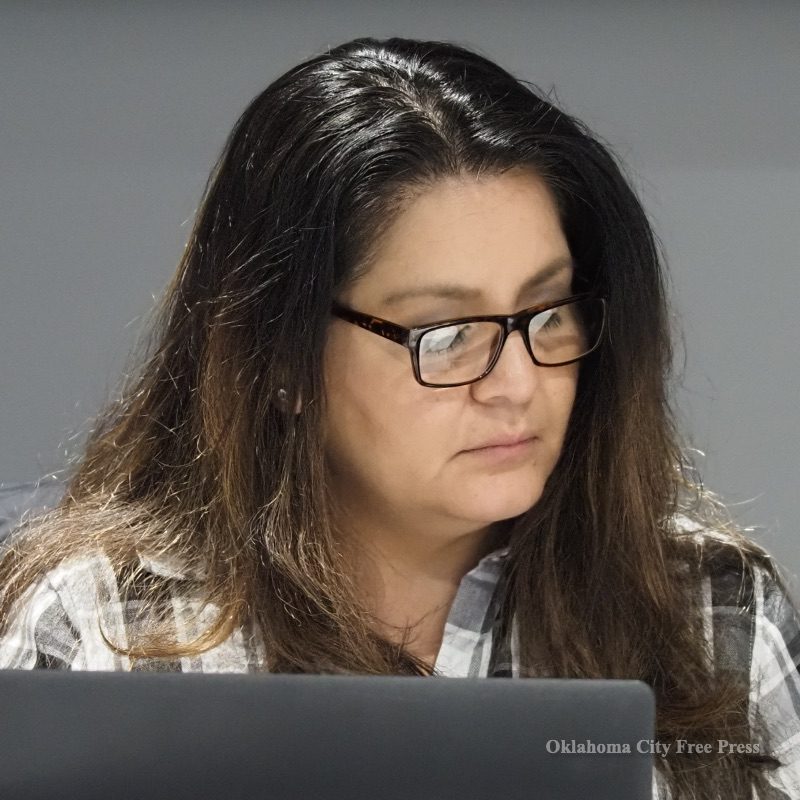Last Updated on March 8, 2022, 1:42 PM | Published: March 7, 2022
OKLAHOMA CITY (Free Press) — In May 2007 Oklahoma City Public Schools Board of Education (BOE) first instituted a school uniform policy. Now, 15 years later, a task force of the Board of Education proposed moving away from school uniforms completely for middle school and high school students.
The resolution passed Monday effective next school year, 2022-23.
But, a board member and the president of the teacher’s union are questioning if enough people have been surveyed before moving to a more traditional dress code that could allow the same disruptions that prompted the district to move to school uniforms in the first place.
The original 2007 policy moved the district away from the usual dress code wrangling of whether a student’s chosen clothing was disruptive or not. Uniforms were prescribed but allowed adoption on a school-by-school basis.
Then, by 2013, news reports from the time say that out of the 74 schools in the district buy in was high with only 17 still not requiring uniforms. The policy was then made more comprehensive applying to all schools in the district and has been that way since.
- See the school uniform policy from 2007 and then revised in 2013 at the bottom along with the newly adopted dress code for 2022-23 school year
Community engagement?
Ruth Veales, a member of the BOE since 2010, objects to what she believes is the board moving too fast into such a large policy change that affects students directly.
Veales said that she knew of some sort of survey that was sent out but she does not believe that the community has been engaged face-to-face nearly enough.

“Well, I think with the information that I have heard them come up with — the research that I’ve heard them come up with — I think it’s bad because of the fact they have not done their due diligence, to even to study and to understand it to know enough about the people or their community,” Veales told Free Press in a phone call. “I think that it is a bad idea when you have not even involved the families, the community.”
Veales, who represents the far eastern part of the school district which includes Spencer, still believes that the threat of gang activity and bullying due to who can wear expensive clothes and who cannot is still an issue.
“Gang activity … doesn’t just happen in the school,” she continued. “Because it’s so prevalent in the school, it’s going to bleed into the community.”
“If they could show me evidence that we are beyond this point of having to worry about these types of things happening, then I’d be on board,” Veales said.
Advisory boards for each school as well as the administrators for the schools were the ones who asked for the school uniform dress code in the first place according to Veales. And, now, the same process should be used to find what the pulse of the community is.
Teacher engagement?
Torie Shoecraft, president of the OKCPS teachers’ union — Oklahoma City American Federation of Teachers — says that she has not heard enough information to make her believe that the timing is right.
“I think that there still needs to be some more conversation around it,” Shoecraft told Free Press by phone. “And, I have concerns that it did seem like they weren’t getting enough input from everyone that would be affected.”

Shoecraft said that she did not know of a parent survey if there was one and did not believe that the teachers had been surveyed, either.
Free Press has found since that there was a survey of parents that brought in a little over 4,600 responses from families in the district of 32,000 students.
However, it seems that neither Shoecraft or Veales were aware of the survey’s response levels or results except from what the Policy Task Force was reporting out.
That still doesn’t account for whether teachers, who are closest to the effects of any dress code, have been heard at all.
“I’m really surprised that they’re actually going to do a vote today to make that decision, because I don’t feel like enough people have been surveyed,” said Shoecraft. “As a parent myself, I would be fine with removing the dress code or the uniform. So I just feel like more information needs to be brought to everyone’s attention.”
Survey
But, there has been a survey that the district staff did through email even though some beyond the Policy Task Force are not aware of it except in mention. The Communications office provided these survey results:
OKCPS-Survey-results-on-uniforms-and-dress-code-3.4.22Original concerns
Board member Gloria Torres, who was an administrator in the district in 2007 when the school uniform policy was first put in place, thinks that especially the gang situation has changed dramatically. She talked to Free Press about how things have changed.
“That was during a time when we were having a lot of issues with the gang violence that was coming in from the city and was coming into the schools as well. And the identification was the clothing,” Torres told Free Press by phone when we asked what is different.
She said that as an administrator she was one who thought school uniforms were a good idea just because clothing was such a large factor in gang association at the time.

But, it wasn’t just about gang associations. Torres said that there was also concern about the differences between the “haves” and “have-nots” causing tensions.
And, with so many fine details in the old dress code — similar to many other school dress codes — she said administrators were weary of being the judge of what was a violation and what wasn’t.
“There were a lot of administrators that were having to be the dress police,” Torres said with a laugh. “Two inches, you know, is it two inches above the knee? Is that, you know, does it go beyond your fingertips? Is that considered to be too grown up for you?”
“To take the subjectivity out of it was the other reason for going into a uniform,” said Torres. She said that there were so many interpretations of what kinds of dress were disruptive there was little uniformity in the district.
But, at least with gang activity, things have changed according to Torres.
“I would say our environment is a lot different. We don’t see the infiltration of gangs through identifying through clothes, like we used to,” she said.
Also, because the community rallied and made a concerted effort to address some of the core issues that fostered the formation of gangs in the first place, there is little of the same gang activity today.
But, what about the “haves and have-nots”?
Torres said that as soon as the school uniform code went up she started hearing from some in the community who thought that having uniforms was actually more expensive because they had to buy uniforms for school but would not wear a school uniform to church or to some family event.
Mobility
Carrie Jacobs, Board member and chair of the Policy Task Force, talked with Free Press ahead of the Board meeting Monday by phone.
She pointed to the financial aspects of parents having to double-up on uniform expenses because of the mobility of our society now.
“I would argue that with the mobility in our district, we are actually making it easier for some families that are switching from other districts to Oklahoma City Public Schools and back,” said Jacobs. “You know, we’ve got kids who can bounce back and forth between Putnam City and Midwest City and more in, you know, those districts don’t have uniform policies. So now, it will be able to have one set of clothes and if they transfer out of the district or into the district, the family doesn’t have to worry about that. They can just wear what they have.”
She also said that even with uniforms, the differences between those who financial means and those who don’t are revealed anyway in the brand of clothes that still meet the uniform code.
In all, Jacobs said that Oklahoma City is just very different now.
“When you look at our city, we’re really a different place than we were 15 years ago,” she said. “And, I think you could say that really, not just about gang activity, but all kinds of things about our city, when you see that kind of civic improvement, that translates to our schools.”
The board meeting is Monday, March 7, at 5:30 p.m. and can be viewed on the district’s YouTube page live-streamed.
2007-2013 Uniform Policy
J-51-UNIFORM-POLICY-REVISED-4-16-13-12022 Adopted Dress Code starting August 2022
F-22-STUDENT-UNIFORMS-revised-Feb-23-2022Founder, publisher, and editor of Oklahoma City Free Press. Brett continues to contribute reports and photography to this site as he runs the business.










